|
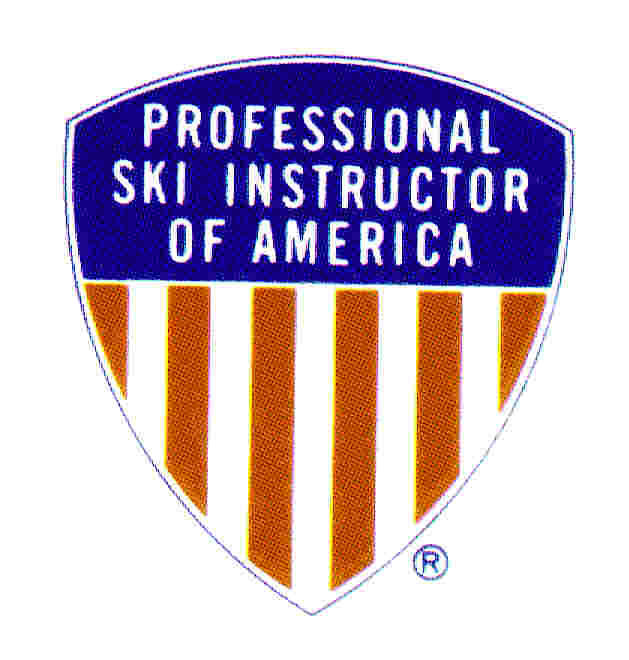
Has
"Ski My Best" been of use? Help keep it going:
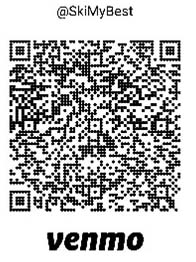
| |
Did you come here from a link on another website? See page bottom for latest version of this page.
This site is not associated with any ski area. Use of any page
means you accept the SkiMyBest Site Use
Agreement or
EXIT NOW.
 "SKIING IS A SLIDING SPORT": a skiing web manual
"SKIING IS A SLIDING SPORT": a skiing web manual
Motion in Skiing
by Bill Jones, Ski Instrucor
Certified Professional Ski Instructor
(Registration #110478), Level III
How To Reserve Private Ski Lessons with Bill Jones
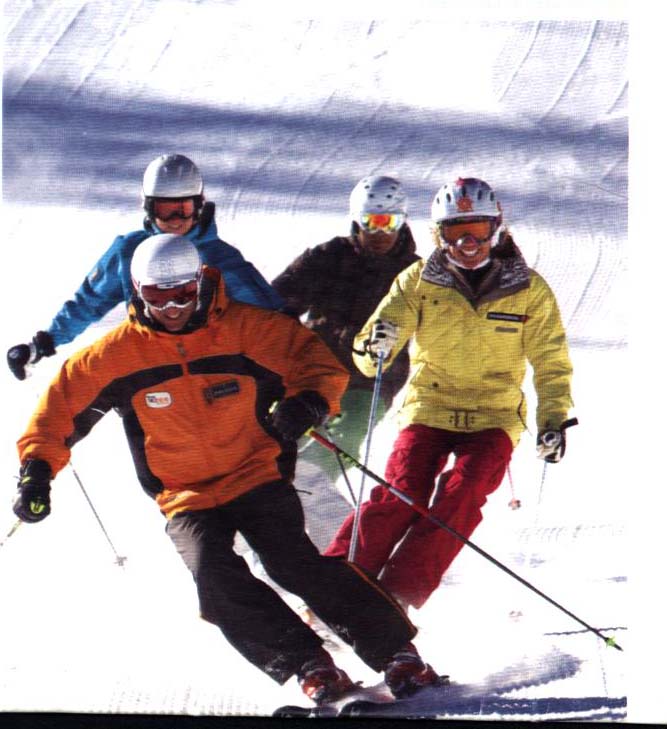 Two four-letter words are key to this
sliding sport: MOVE and MORE. Yes, move the body parts into new positions to
point the skis, tip the skis, and pressure the skis. And, for most, move more,
because our uncertainties inhibit us into too much caution and the skis don't
get our intended directions strongly enough to do what we want them to. Two four-letter words are key to this
sliding sport: MOVE and MORE. Yes, move the body parts into new positions to
point the skis, tip the skis, and pressure the skis. And, for most, move more,
because our uncertainties inhibit us into too much caution and the skis don't
get our intended directions strongly enough to do what we want them to.
"Now that it seems to you that you
have doubled the range of your motions, as I asked", said the instructor to his
uncertain student, "double them again, square the result, multiply that by 3.5
and you will have accomplished half as much as you need to". So advised the
instructor to his fearful student, who seemed more like a zombie than
a living human. Of course, a few learners will move too much, but even these will
likely
move in the wrong direction or at the wrong moment or pace, so they, too, can benefit
from a pair of eyes outside their own bodies to help them understand the effect of their motions.
MOTION is the special province of the animal kingdom. Plants, mainly,
are rooted; mostly they just sway or drift. Animals go where they please, and when, and
how. It's great to be an animal. Let's capitalize on our special attribute!
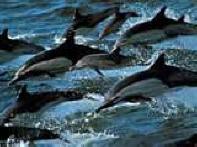 Favored are the animals that fly or swim. Watching flocks of birds veer in unison or
porpoises surfing in formation can give us humans pangs of jealousy. We, however, can
dance with intricate fluidity. We can harmonize with the undulating haunches of a trained
riding horse. We can flit underwater with the aid of swim fins or surf down wavefronts with
boards or just our bodies. We can sail over water with the wind, or soar on it
with wings in the sky. We can slide across ice
surfaces, even twirling and leaping as we go. With wheels we can do more on
solid ground. Skiing, too, is about the
human body in motion, allowing gravity to propel us. Skiing is setting our bodies free from
attachment to Earth. It is another, special, way to do the animal thing of going where we please, and when, and how. Favored are the animals that fly or swim. Watching flocks of birds veer in unison or
porpoises surfing in formation can give us humans pangs of jealousy. We, however, can
dance with intricate fluidity. We can harmonize with the undulating haunches of a trained
riding horse. We can flit underwater with the aid of swim fins or surf down wavefronts with
boards or just our bodies. We can sail over water with the wind, or soar on it
with wings in the sky. We can slide across ice
surfaces, even twirling and leaping as we go. With wheels we can do more on
solid ground. Skiing, too, is about the
human body in motion, allowing gravity to propel us. Skiing is setting our bodies free from
attachment to Earth. It is another, special, way to do the animal thing of going where we please, and when, and how.
To use the body in a physical way that involves the blending of balance and motion
gives a sensation of pleasure that may be narcotic. Snow-boarders know this, as do
ice-skaters, and, I suspect, so do tumblers, gymnasts, acrobats, dancers, roller-bladers,
sail-boarders, surfers, mountain-bikers, rock climbers, and probably golfers and tennis
players. Football place-kickers probably know it, too, but I doubt if many other sports
participants can relate to what we skiers feel, and I wonder if the competitive fires
enjoyed in these other sports are adequate compensation for not having these sensations of managed balance and
motion. Skiers, though, can compete, too, in ski racing and other means.
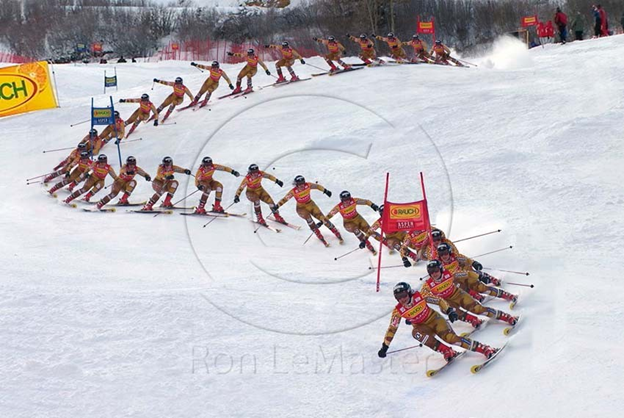
CONTROLLING MOTION is a major focus of skiers--at least it is of those
who survive. Controlling motion on skis may involve changing direction or
changing speed or both. By turning our direction of travel we can avoid things,
or, if we prefer, hit them (like a ramp to lift off)! To change our speed we have three choices, and the
first is again a change of direction, for if we ski more steeply downhill, we
can speed up; less steeply, we can slow up. A second way to change our speed--if
the snow is soft and deep--is to sink our skis into it so there is resistance on
them and our legs. The third way
is to put the skis in a tilted position so their edges scrape the snow, creating
friction. (Here, someone usually notes there is a fourth way--you can also fall down; of course this
creates even more friction).
 "SKIING
IS A SLIDING SPORT"--a skiing web manual:
Skiing Web Manual Contents Why Read
This Skiing Web Manual That First Skiing Lesson A Little Skiing History
MOTION
IN SKIING
Conventional Skiing Wisdoms
Skier Excuses Fear in
Skiing Conditioning
for Skiing
Equipment and
Technique
Skiing Equipment
How Skis
Work How
to Develop Balance on Skis A Skiing Turn
Simplified The Final Skiing Skill:
pressure management Tactics for Terrains and Snow
Textures and Racing
Skiing Tips and Tales--a potpourri
Exercises for Developing Skiing Skills
Children and Skiing
Age_and_Skiing
Gender & Skiing
Culture & Skiing
Skiing Ethics and Slope Survival
Slope Safety Skiing
Environment Videos and Apps Glossary Acknowledgements
SkiMyBest Website Contents "SKIING
IS A SLIDING SPORT"--a skiing web manual:
Skiing Web Manual Contents Why Read
This Skiing Web Manual That First Skiing Lesson A Little Skiing History
MOTION
IN SKIING
Conventional Skiing Wisdoms
Skier Excuses Fear in
Skiing Conditioning
for Skiing
Equipment and
Technique
Skiing Equipment
How Skis
Work How
to Develop Balance on Skis A Skiing Turn
Simplified The Final Skiing Skill:
pressure management Tactics for Terrains and Snow
Textures and Racing
Skiing Tips and Tales--a potpourri
Exercises for Developing Skiing Skills
Children and Skiing
Age_and_Skiing
Gender & Skiing
Culture & Skiing
Skiing Ethics and Slope Survival
Slope Safety Skiing
Environment Videos and Apps Glossary Acknowledgements
SkiMyBest Website Contents
This "'Motion in Skiing'" page last modified
March 8, 2025. Did you come here from a link on another website?
For latest version of this page, copy to your browser:
http://www.SkiMyBest.com/skimotin.htm.
Copyright © 2013, 2014, 2015, 2016, 2017, 2018, 2019, 2020, 2021, 2022, 2025. William R Jones.
| |

|
